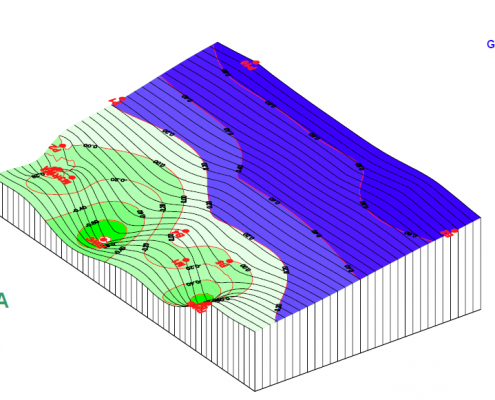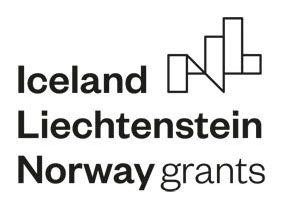Soil Remediation Methods
Remediation Methods
In total, there are 4 major categories of soil remediation measures as follows:
A) Total excavation, treatment-inactivation, reuse or disposal – destruction at specific hazardous waste disposal sites
B) Treatment with in situ physico-chemical and biological methods (on site without excavation), ex situ (on site: in the field or off site: in another specialised area), repositioning of the soil in its original position
C) Pollution encapsulation (cover with impervious cover, construction of hydraulic or various impermeable dams)
D) Simple monitoring of natural pollutant weakening while limiting polluting activities
Often, the remediation measures applied in a polluted field combine all four categories as an optimal combination taking into account the particular economic and technical conditions that characterise it.
Figure 1A summarizes the four main categories of sanitation measures that can be applied to a contaminated field:

Description of Decontamination Techniques
In “ex situ” techniques, excavation of the contaminated soil occurs while in “in situ” there is no excavation.
The various techniques to be applied on a case-by-case basis are:
A) For soil and sludge
1) Ex situ Bioremediation
The bioremediation method is one of the most efficient and cost effective techniques for the decontamination of soils and underground aquifers. It is based on the degradation of organic substances and their conversion to harmless substances through the action of microorganisms
3) In situ Bioventing (soil only)
Bioventilation involves the introduction of air into the unsaturated soil zone in order to activate the microbial action and biodegradation of the existing pollutants. The main objective of the process of bioventilation of polluted soils, is to increase the concentration of oxygen in the subsoil by directly introducing air into it, by means of appropriate drilling. By increasing the concentration of oxygen in the soil, the existing microorganisms, which are capable of aerobically degrading the existing organic pollutants, are being enhanced.
4) In situ suction of underground air (SVE, Soil Vapour Extraction )
The soil vapor extraction technology from the unsaturated ground area aims at the natural separation of the airborne pollutants from the soil through vacuum application. When the ground air remains stationary after leakage and infiltration of a pollutant into the soil, it becomes saturated with vapors of the existing pollutant originating from the liquid phase.
5) In situ Soil flushing
In soil flushing, an aqueous solution is injected or filtered into the contaminated soil area, followed by pumping of the groundwater and the solution containing the removable pollutants, processing on the surface of the soil and discharging or re-injection.

B) For groundwater
1) Techniques for recovering petroleum products from underground water
Generally there are four (4) methods of recovering free hydrocarbons from groundwater
A) Recovery through Skimmer pumping systems

B) Recovery via Skimmer pump systems in combination with a Dual pump system

C) Recovery of three-phase oil layer, ground water, air. (Bioslurping)
The Bioslurping process achieves the recovery of existing quantities of oils floating in the groundwater with as little groundwater pumping as possible, while with the technologies of soil air extraction and bioventilation of the unsaturated zone, the biodegradation of volatile organic pollutants is strengthened. The basic idea of bio-suction technology is the removal of light petroleum hydrocarbons (LNAPL), which have accumulated on the surface of the aquifer under the form of a free oil phase, with minimal groundwater suction. For this purpose special boreholes are used, which have a perforated casing at the ground water level, extactly to the point where the free oily phase accumulates.


D) Recovery of petroleum and groundwater mixture (Total fluid recovery)
The use of special pneumatic, automatic, submersible pumps of total water mixture and floating phase of petroleum products from underground water, allows the creation of a hydraulic barrier for the safe containment of the pollution.

2) Pumping and treatment methods
A) Air Stripping
Air stripping is a process that enhances the evaporation of various components from the liquid phase (groundwater) to the gaseous (air) through the transition of air through the treated water. This particular technology is applied for the treatment of groundwater that has already been removed from the subsoil by pumping and has been proven to be particularly effective and economical in removing volatile organic pollutants from groundwater at relatively low concentrations (< 200mg / L).
B) Granular Activated Carbon Adsorption
Active Charcoal Treatment (Figure 1) has been designated by the United States Environmental Protection Agency (EPA) as the Best Available Technology (BAT) for the removal of organic pollutants. The adsorption of activated carbon provides an efficient and reliable solution for the removal of organic pollutants and is suitable for the decontamination of a wide range of organic substances with high concentrations.
3) Various in situ processing techniques
A) In situ Air sparging
The Air Sparging technique involves blowing air into the saturated subsoil area, in order to evaporate the existing pollutants and enhance their biodegradation. Due to the introduction of air into the subsoil and the evaporation of the pollutants, in most applications, it is necessary to remove them from the unsaturated zone, applying the technology of ground air extraction.
B) Chemical oxidation / reduction
Chemical oxidation / reduction typically involves redox reactions, which convert hazardous pollutants into compounds that are harmless, less toxic, more stable, less mobile, or inert. During redox reactions, electrons of one substance are transferred to another. In particular, a reactant is oxidized (loses electrons) and the other reactant is reduced (it gains electrons). The oxidizing agents used to treat soil pollutants include ozone, hydrogen peroxide, hypochlorite, potassium permanganate, Fenton’s reagent (hydrogen peroxide and iron), chlorine and chlorine dioxide. This method can be applied in situ or ex situ to soils, sludges, sediments, and other solids as well as groundwater. Chemical treatment may also include the use of ultraviolet (UV) radiation.
C) Permeable Reactive Barriers

A Permeable Reactive Barrier includes a treatment zone that is constructed and placed in the subsoil to purify extracts and contaminated water passing through it.
The permeable active barriers must have a minimal effect on the flow rate of the contaminated water, and this is achieved by the construction of a permeable active zone or a permeable active cell surrounded by low permeability barriers in order to push the pollutants into the active treatment zone. They are passive processing systems that can be used for risk management even in extreme contamination situations. Alternatively, drilling wells for specific liquid solutions can be used as permeable active barriers to treat the underground water.
 Relative experience in choosing the right technique
Relative experience in choosing the right technique
INTERGEO has implemented both in Greece and Cyprus all the above-mentioned remediation techniques, and where selected based on the local geo-environmental conditions and the pollution risk with great success. Also, the R & D department has updated the latest developments on new, improved and innovative detergents with the aim of continuously expanding and improving the services offered.
In situ and on site techniques for soil and groundwater decontamination are always more cost-effective compared to excavating and handling of contaminated materials as hazardous waste and are the ideal solution to addressing such problems.































